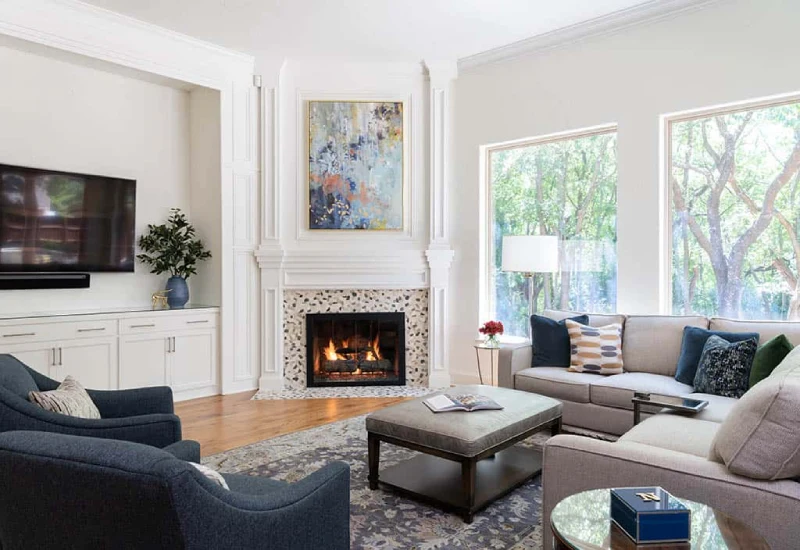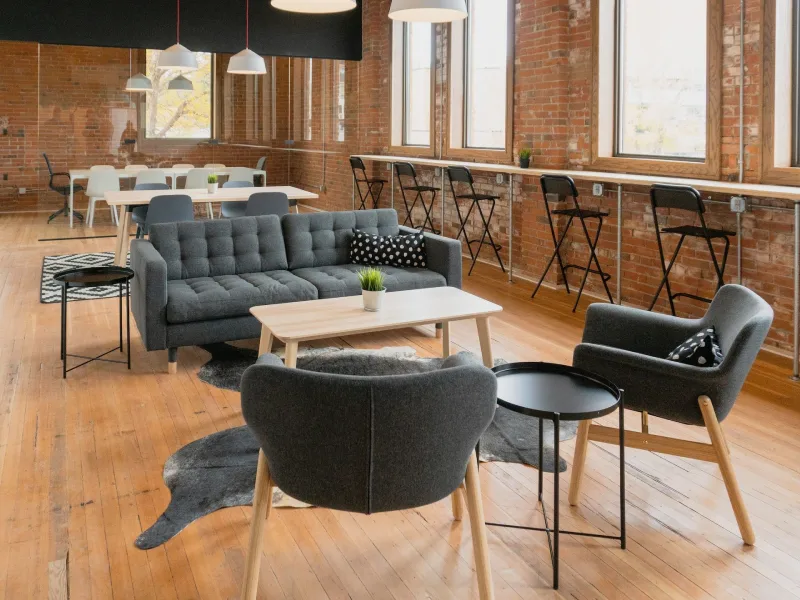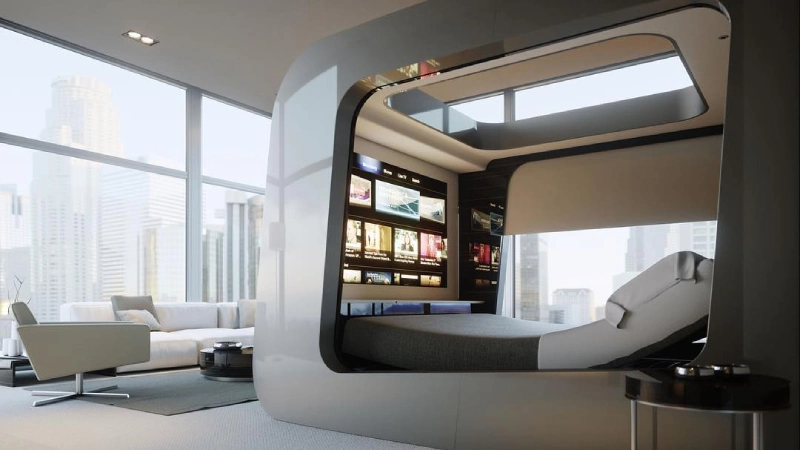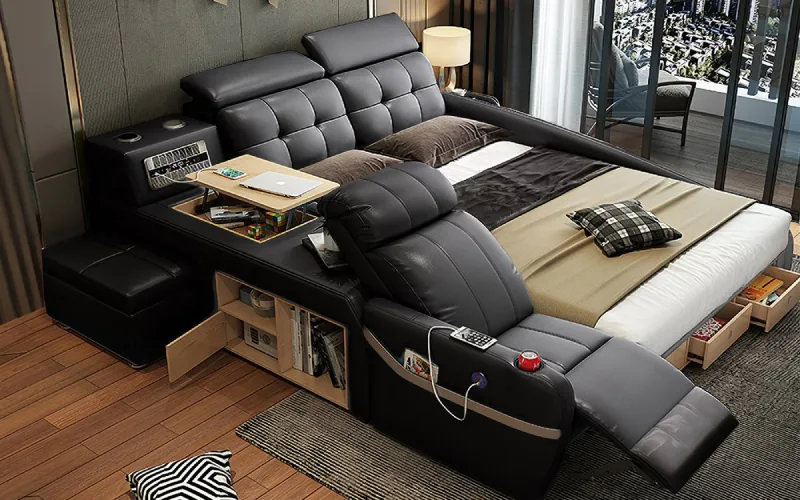Furniture is not limited to being just utility items in the house, rather it is a cocktail of art, science and civilization.
Be it a simple stone stool from the episodes of stone age or stylish ergonomic chairs of the current generation, furniture is an indispensable part of man’s life which not only symbolizes his requirements but also art conscience.
Ancient Beginnings
The historical aspect of furniture can be attributed to the earliest days of the different societies. Furniture’s history dates back to early times, and those objects that were created then are very primitive and were used mainly as seating and tables and were made from stones and wood and animal bones.

The Egyptians were one of the first to design furniture, many of which are still similar to that of today’s furniture such as beds, stools and tables with carvings and/ or inlay of ivory and gold.
Medieval and Renaissance Periods
In the Middle Ages, furniture was also designed more and more for use and not for show due to their way of Living. However, the Renaissance marked the fresh beginning in art and culture domains that impacted the furniture designs vigorously.
High quality designs of furniture were characterized by wonderful carving works, intricate inlays, and high quality materials that were utilized, all of which were as a result of the imperialism of the period.
Have a look at carpet in living room.
The Industrial revolution and modern period
The Industrial Revolution changed furniture production as a whole from craft to factory production and lies metal and glass as material.

These periods underwent formation of styles and structures such as the Art Nouveau styles and the Art Deco styles; these styles put into consideration both the looks and the use of artefacts.
Modern furniture design emerged in the 20th century and put a major emphasis on functionality and reduction of the amount of details.
This advertises Image, utters Idea, and disseminates Information when Ideas are expressed in the Elements of Furniture Design.
- Functionality: Underlying of course furniture, it must function as chairs, tables or the like. No matter if the piece is a chair for sitting, a table for eating, or a bed for sleeping, the main purpose is the guide in this process. Nevertheless, contemporary designers pursue the functionality in their works being combined with the beauty, and that is why we can observe the objects that can both be used in everyday life and look good.
- Ergonomics: Ergonomics is the study of developing furniture that supports the worker so that he / she can work comfortably. Anti-Stress furniture promotes the natural alignments and movements of the human body thus eliminating or lessening stress points. This is especially the case in office furniture where people spend most of their time working.
- Aesthetics: The aspects of furniture design that fall under aesthetics include style, form, color, as well as texture. This is to mean that designers design their items with perceptions of art and outside world impression by adopting various works of art movements and cultural trends. The design of furniture is indeed influenced by the aspect of aesthetics, whether it is the simple and smooth cutouts of Scandinavian designs, or the carving details of the Baroque furniture or even the contemporary furniture with mixed tastes.
You Should also know – Corner table for living room
Materials and Craftsmanship
- Wood: Thus the raw material used in furniture making is wood which is arguably one of the oldest materials used. The variety of woods that is available include oak, maple, mahogany and pine, and these have got distinct properties and looks. It can be carved, turned or has a variety of finishing which has made it to be preferred by artists and designers.
- Metal: Metal furniture began usage during the Industrial Revolution and until now it is preferred for its features such as strength and durability. Among the most demanded and popular materials in modern furniture design there are such as steel, aluminum, and wrought iron. Most metal pieces are very neat and the industrial look is popular now, so such equipment is more suitable for modern interiors.
- Upholstery: Sofas, chairs and other types of furniture which are often called upholstered furniture impress with their comfort and the choice of style. Fabrics include natural fabrics including cotton and linen and synthetic fabrics like polyester and others microfiber. Leather is also famous because it is hard-wearing and has a rather noble touch to it. Upholstery can be done in many shades, designs, and types thus giving a room character.
- Sustainable Materials: Nowadays, due to the popularization of environmental concerns, the importance of eco-friendly materials in furniture production is increasing. The choices include reclaimed pine woods, bamboo, and recycled products since they do not affect the environment. Sustainable furniture also emphasizes durability and, therefore, has an emphasis on pieces being able to have longevity in a household.
Explore more about – Glass dining table
The Impact of Technology
It Is possible to conclude that the revolution in industrial production and the availability of modern technologies influenced furniture design.

CAD lets the designers get detailed and complex designs, whereas, CNC machines and 3D printers help them get complex and efficient manufacturing solutions.
Smart furniture signifies a category of furniture that is compatible with technology; features such as adjustable beds, charging points included in the furniture piece, and furniture that can be modified in accordance with the user.
The subject entitled Trends in Contemporary Furniture Design focuses on the development of furniture design in the modern world.
- Minimalism: Sleek, simplicity, and clean shapes are still favourites of this year; black and white remains the colour scheme of choice. This style is also greatly pragmatic and pays much attention to the use of space, many a times using multiple duties of furniture in small residences.
- Mid-Century Modern: A subset of this is the Mid-century modern which entails designs originating from the mid of the 20th century including the 1940’s to the 1960’s that lack geometric forms, incorporate organic shapes and simple forms, as well as embrace the use of high-tech materials. It is a trend that continuously surfaces in interior design because of the perfect blend that it symbolizes of both form and function.
- Eclectic and Bohemian: In fashion, eclectic and bohemian styles look like a blend that does not follow any structure and unites different textures, materials, colors, and patterns. This trend continues to enable people to be as creative as possible hence offering a one of a kind colorful theme for interiors.
- Sustainability: Green design is now trending, and people are always willing to buy furniture that is friendly to the environment. This involves items that have been made from recycled or upcycled products or products that have been made through sustainable production.
- Smart Furniture: With the integration of technology into our day to day lives, smart furniture is becoming a trend. These pieces can include things such as charging docks, which come as technological additions to furniture; customizable settings which can be altered by an application on a cellphone; and light systems.
Get information about – Best office chair
The Future of Furniture
Contemporary trends which will define the furniture design process in the future are technology, environmental concerns as well as shifts in people’s way of life.

With the trend of creating megastructure and skyline cities all over the world, people’s living spaces are getting limited and therefore, they will need furniture designs that are multipurpose and compact.
Advancements in the field of material science can define the usage of some new and efficient material that is both strong and beautiful.
Also, customization and personalization will remain key and important to the community; this is because the people will desire furniture that is unique to them and can physically fit into their home. This trend will be backed by improvements in the production processes that seem to increase flexibility to production.
Here is modern office table.
Conclusion
Furniture is a mirror and in many ways an extension of our lives, what we believe in, and what we strive for. It combines creativity and rationality, the past and the modern world, practice and beauty.
Thus, furniture design will continue to be defined by the correlation of these elements and ensure that people are living in functional yet artistic spaces.
In fact, be it you are interested in or fond of the traditional furniture looks or the contemporary and latest styles, there are all ways of making the furniture world go round.


